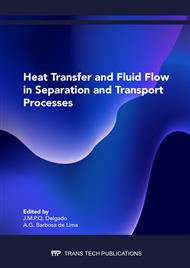[1]
IRENA (2019), Global energy transformation: A roadmap to 2050 (2019 edition), International Renewable Energy Agency, Abu Dhabi.
Google Scholar
[2]
IEA (2020), World Energy Outlook 2020, IEA, Paris https://www.iea.org/reports/world-energyoutlook-(2020).
Google Scholar
[3]
APREN (2020), Anuário da Apren (2020).
Google Scholar
[4]
IRENA (2019), Future of Solar Photovoltaic: Deployment, investment, technology, grid integration and socio-economic aspects (A Global Energy Transformation: paper), International Renewable Energy Agency, Abu Dhabi.
Google Scholar
[5]
Portuguese Government. Roadmap for Carbon Neutrality 2050 (RNC 2050),. Portugal, June (2019).
Google Scholar
[6]
National Geographic, The evolution of solar technology,, 2012 [Online]. Available: https://blog.nationalgeographic.org/2012/05/30/the-evolution-of-solar-technology/.
Google Scholar
[7]
Clearway Community Solar, The Evolution of Solar Panels,, 2018 [Online]. Available: https://www.clearwaycommunitysolar.com/blog/understanding-community-solar/evolution-solarpanels/.
Google Scholar
[8]
Vallêra, A., Brito, M.; Meio Século De História Fotovoltaica., Gazeta de Física, 2006: 10-15.
Google Scholar
[9]
Tiantian Zhang, Meng Wang and Hongxing Yang. (2018) "A Review of the Energy Performance and Life-Cycle Assessment of Building-Integrated Photovoltaic (BIPV) Systems.
Google Scholar
[10]
N.M. Kumar, K. Sudhakar, and M. Samykano. (2019) Performance comparison of BAPV and BIPV systems with c-Si, CIS and CdTe photovoltaic technologies under tropical weather conditions., Case Studies in Thermal Engineering 13: 100374.
DOI: 10.1016/j.csite.2018.100374
Google Scholar
[11]
L. Ahmad, N. Khordehgah, J. Malinauskaite, H. Jouhara. (2020) Recent advances and applications of solar photovoltaics and thermal technologies, Energy 207 (2020) 118254.
DOI: 10.1016/j.energy.2020.118254
Google Scholar
[12]
P.G.V. Sampaio, M.O.A. González. (2017) Photovoltaic solar energy: Conceptual framework, Renewable and Sustainable Energy Reviews 74 (2017) 590–601.
DOI: 10.1016/j.rser.2017.02.081
Google Scholar
[13]
IEA (2019), Tracking Energy Integration, IEA, Paris https://www.iea.org/reports/tracking-energy-integration.
Google Scholar
[14]
Amrouche, S. O., Rekioua, D., Rekioua, T., & Bacha, S. (2016). Overview of energy storage in renewable energy systems. International Journal of Hydrogen Energy, 41(45), 20914-20927.
DOI: 10.1016/j.ijhydene.2016.06.243
Google Scholar
[15]
Andrey, C., et al. (2016) The Role and Need of Flexibility in 2030: Focus on Energy Storage,. Technical Report, (2016).
Google Scholar
[16]
IRENA (2020b), Electricity Storage Valuation Framework: Assessing system value and ensuring project viability, International Renewable Energy Agency, Abu Dhabi.
Google Scholar
[17]
IRENA (2017), Electricity Storage and Renewables: Costs and Markets to 2030, International Renewable Energy Agency, Abu Dhabi.
Google Scholar
[18]
IRENA (2015), Renewables and Electricity Storage: a technology roadmap for Remap 2030, International Renewable Energy Agency, Abu Dhabi.
Google Scholar
[19]
Chen, Haisheng, et al. (2009) Progress in electrical energy storage system: A critical review., Progress in natural science 19.3 : 291-312.
Google Scholar
[20]
A.C.C. Oliveira, Indoor Thermal Comfort Impact of Heated Air Indirectly Produced by Photovoltaic Panels, Dissertation in Building Construction, University of Porto, Portugal, (2021).
Google Scholar
[21]
ANSYS, ANSYS Fluent Theory Guide, vol. 15317, no. November. (2013).
Google Scholar
[22]
V.P. Freitas, M.I. Torres, A.S. Guimarães. Humidade Ascencional. FEUP, (2008).
Google Scholar
[23]
Y. A. Çengel, Heat and Mass Transfer - A practical approach, Third edit. McGraw-Hill Science/Engineering/Math, (2007).
Google Scholar
[24]
Rahul Khatria, Abhay Pratap Singha, Vaibhav Rai Khareb. (2016) Identification of Ideal Air Temperature Distribution using different location for Air Conditioner in a room integrated with EATHE – A CFD based approach, Energy Procedia 109 ( 2017 ) 11 – 17.
DOI: 10.1016/j.egypro.2017.03.036
Google Scholar
[25]
A.A. Youssef, E.M. Mina, A.R. ElBaz, R.N. AbdelMessih. (2017) Studying comfort in a room with cold air system using computational fluid dynamics, Ain Shams Engineering Journal 1753-1762.
DOI: 10.1016/j.asej.2016.07.005
Google Scholar


